Women, Culture and Politics: Buffy’s Critical Bite
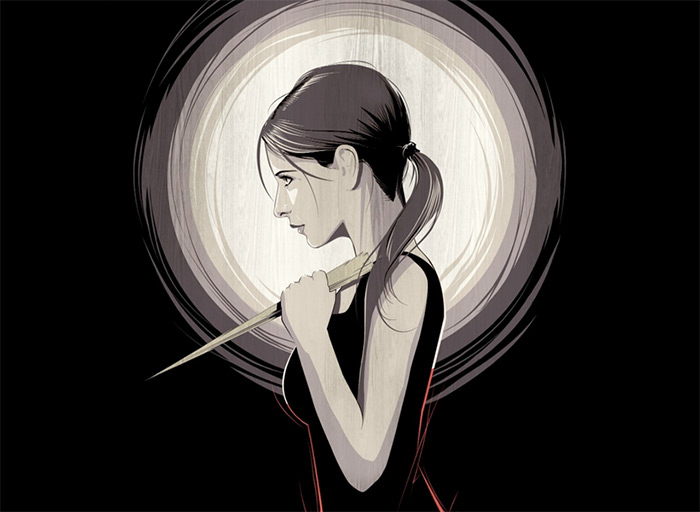
Politics is as much about fictions as it is about the “real world.” Politicians commonly refer to their opponent’s views as fairytale – unrealistic and unsophisticated. Within the academy, the consideration of fairy-story lives an isolated life in the margins of cultural studies and humanities departments.
In an academic world where positivism rules, there is little room for what imagined narratives can tell us about real world politics. Yet, if we cast our gaze beyond the small world of political theory and those who manage the polling and policy shops, another reality emerges. For example, a $115 billion video game industry is fuelled largely by role-playing games that allow players to inhabit fantasy worlds of all shapes and sizes – worlds populated by dragons, demons, zombies, and aliens.
President Obama has been featured on the cover of Marvel’s Spider-Man and helped the title character solve crime in its pages (Irvine, 2009). Abraham Lincoln has fought zombies, vampires and other creatures in film and graphic novels (see Abraham Lincoln: Vampire Hunter (2010), Abraham Lincoln: Vampire Hunter (2012), The Art of Abraham Lincoln: Vampire Hunter (2012) and Abraham Lincoln vs. Zombies (2012)). Canadian Prime Minister, Justin Trudeau, has joined the Marvel super-hero team Alpha Flight in one of its issues (“Justin Trudeau joins Canadian superheroes,” 2016).
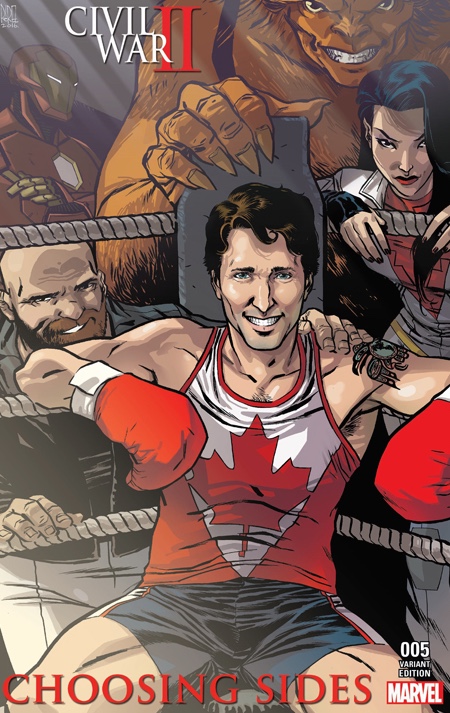
Indeed, despite some attempts to stamp out the value of traveling to the fantasy realm via art, it seems the desire to inhabit it is as strong as ever, even pulling primary world political leaders into its nexus. Could there be a value in exploring fictional narratives as a means to see “real world politics” more clearly? Could there be a human imperative to balance our senses with our powers of imagination?
Raw science has little power in a fairy-story – natural laws may not apply. Human minds have the power to invent things that do not exist in a physical sense. But the things we invent in our mind’s eye have tremendous influence in the primary world, and the fact they don’t exist in a physical sense may be irrelevant – this is the case with fantasy fiction. The fairy-realm (expressed through fantasy art) is a unique branch of creativity and has immense power to influence culture and politics, often through subtle means.
JRR Tolkien describes this fairy-realm as a place of wonder, but it is also a “perilous” realm because once entered, through the portal of your imagination, it can change you in ways you never intended. In an enchanted world the rules are different, as Tolkien describes it, “…when we cross the borders of Faerie we believe…that the scientific, measurable, facts and ‘laws’ of the relationship of things and events are only one aspect of the world. There is a world where things are not so: where will, imagination and desire are directly effective” (OFS p. 257).
In this essay, I argue that women’s fortunes in fantasy art (the fairy-realm) are directly connected to their political fortunes in the primary world. In essence, if you want to change your political fortunes, a means is through fantasy art; political change has to be imagined before it can be implemented. When political agency is achieved in a culture’s imagination, real-world politics tend to absorb that narrative. Women have won many battles in the fairy-realm, now it appears that success is being felt in the primary world of politics, too.
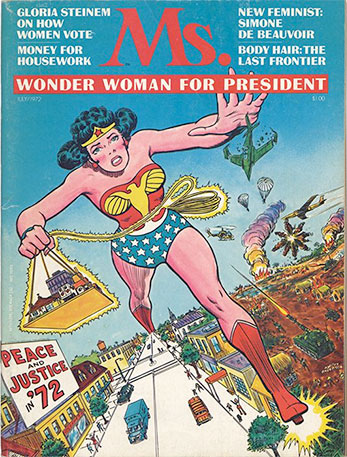
Women and cultural imagery
The conflict over recognizing women’s political agency in 20th and 21st century Western culture plays out in two forums: first, in the world of activism and political policy; second, in the fictive realm.
From the suffrage movement, to the Person’s case in Canada, to the political critiques of Betty Friedan and Gloria Steinem, women have achieved much in terms of breaking down the doors to political office. But this activism was complemented by a parallel process playing out in the fictive realm. Indeed, there is a strong case to be made that the victories females won in the fictive realm were a necessary condition for achieving greater political agency in the real world. I have argued elsewhere that framing proceeds policy (see MacLeod & Webb, 2011). Similarly, cultural framing must precede how a group is received in political and economic contexts.

The dominant theme of women as objects to be desired and won by male characters in works of fiction is pervasive and has ancient origins. From the 2100 BC epic of Gilgamesh, originating in Mesopotamia, through the Holy Bible, Greek and Roman lore, medieval tales, to James Bond, the dominant Western narrative is one of women as either a source of sexual temptation to test the male hero’s character, or as an object to be rescued and then awarded as a sexual prize.
It is difficult to be taken seriously as a legitimate political and economic agent when your cultural narrative constantly frames you as apolitical, politically naive, incompetent, or irrelevant.
The narratives of Cleopatra, Joan of Arc and Elizabeth I may be exceptions to the submissive rule, but then again Cleopatra was extremely intelligent, beautiful, witty, charming, and well-versed in politics. Joan of Arc had visions and premonitions from God which was enough to lift the spirits of a nation in military and economic malaise, and Elizabeth I was a ‘virgin queen’ with great presence and a bad temper at a time when heads were still to be chopped off. In short, exceptionality can turn cultural norms, even those of gender, but the overall trend of gender bias has continued within Western culture.
However, there is a counter-narrative which is apparent in such diverse sources as 19th century British painting, the reach of the press, early 20th century radio and middle century television, the voices of university-educated women, and comic books and graphic novels. Change in women’s status is as much attributable to the fictive realm as our lived experience. Rarely in the culture of a nation can one point to a single event or date when a cultural narrative shifts. It is more likely an incremental process and it is rarely linear – narratives are expressed or suppressed. Despite this, there seems to be a sustained and increasing trend throughout the 20th and 21st centuries of treating female and male fictional characters as equals. I contend that the change in women’s fortunes in the fictive realm has contributed to changing roles for women in the primary world of politics and economics.
Waterhouse
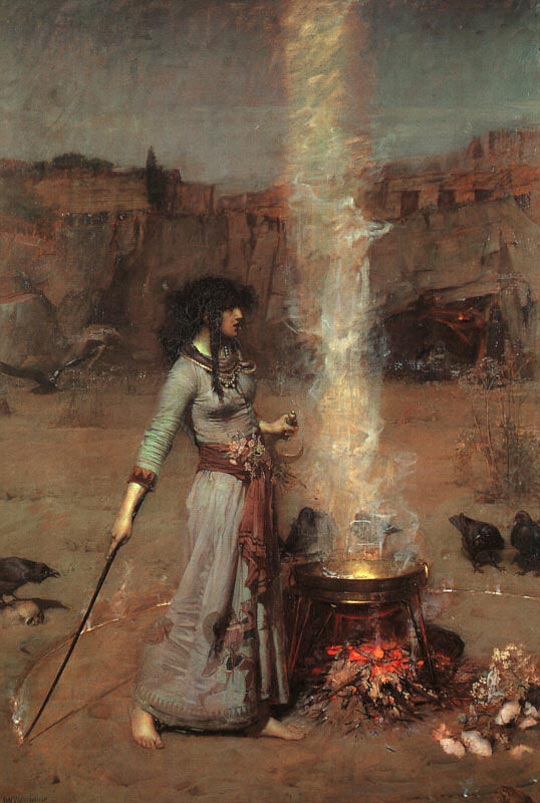
As in history, the fairy-realm is messy, narrative tropes advance and retreat in their expression or suppression. The current trend featuring the ‘woman as hero’ trope was foreshadowed much earlier: for example, it can be seen in the paintings and drawings of the distinguished British artist, John W. Waterhouse. His most famous pictures reflect the narrative of the Lady of Shalott. By Waterhouse’s hand, this character is seen struggling to escape from her oppressive tower seemingly desiring to experience life directly rather than simply watch the world go by through a mirror (see Tennyson’s poem ).
Another interesting example from Waterhouse’s hand is The Magic Circle: completed in 1886, this oil on canvas presents a subtle political element. The picture presents a dramatic scene where a dark-haired sorceress is preparing a spell over a boiling cauldron; she is drawing a circle in the sand at her feet while gripping a scythe in the other. Outside of the circle, ravens group ominously around her, and further into the background, dark mythical creatures seem to lurk in the mouth of a cave. She is surrounded by dread, ill-omens and what appear to be ghouls, or similarly threatening creatures; yet, she shows little fear as she prepares her spell of protection and steels herself for the battle to come. Unlike many contemporary depictions of female spell-casters in fantasy art, she is not rendered in an overly sexualized way. She is shown wearing a full-length dress, with sleeves which go to the middle of her forearm, the viewer sees her face in profile, but heavily shrouded by her hair, which is pulled back as she is getting ready for ‘business.’The narrative can be read as a woman capable of defending herself against the evil the world in this painting is able to set against her.
This picture found a receptive audience at the Royal Academy, and it was considered worthy of the national collection, but for its time its narrative frame was the exception rather than the rule (Prettejohn, Teippi, Upstone, & Wageman, 2010, p. 106).
Disney
One of the greatest challenges to reframing women’s narratives more progressively is found in the frame evoked by Disney cartoons, specifically the theme of the Disney princess. The narrative is supported by well-crafted animated movies, featuring the work of talented and skilled animators and superb voice-actors. Their appeal in popular culture is well-established, and their connection to the childhood memories of generations makes any critical assault on them fraught with economic and emotional peril – what academic criticism can prevail against our childhood memories? Yet, the design and insight from every Disney princess cartoon follows a clear pattern – a young woman is being oppressed by her family and/or social context, usually at the hands of an older woman (e.g. Snow White and the witch, Ariel and Ursula, Cinderella and her step-mother and sisters). Her salvation comes in the form of a male character, usually a prince, who has access to political power. The male prince and potential princess must overcome the oppressor(s) attempting to thwart them, which results in a climax involving the prince saving the princess with a kiss.
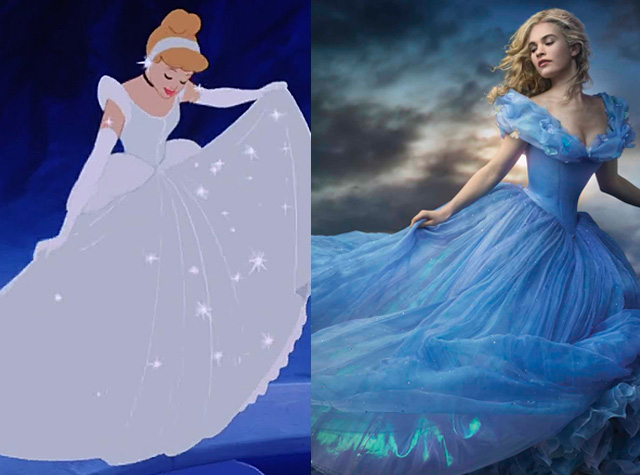
Like a relentless marketing campaign, this narrative is reinforced with movie plots from a variety of time periods and ethnic/regional settings (Aladdin, Pocahontas, Mulan, Tangled). But are these are just cartoons for kids – isn’t this naïve theme abandoned in fiction for adults? Hardly, if anything it is more prevalent because of its subtlety.
Let’s look at two contemporary examples. The Twilight series’ (2008–2012) main character: Bella – they only slightly changed her name from the character from Beauty and the Beast. In the first fifteen minutes of the opening film of this series, Twilight (2008), she abandons her family and friends to follow the dark stranger who catches her eye, who vacillates through the rest of the film from wanting to kiss her to contemplating biting her neck, and in one scene he throws her across a room (Mooradian, Morgan, Godfrey & Hardwicke, 2008).
The Hunger Games series (2012–2015) also fits this mold – the final climatic scene in The Hunger Games: Mockingjay – Part 2 (2005) has the female protagonist, Katniss, assassinating the female rebel president, while sparing the white male tyrant who bedeviled her for four feature length films (Jacobson, Kilik & Lawrence, 2015). The threat is an older woman, her male opressor may be spared.
Moreover, outside of the realm of fairy, the Disney princess trope gets repeated in most romantic comedies and paperback romance novels.
Wonder Woman
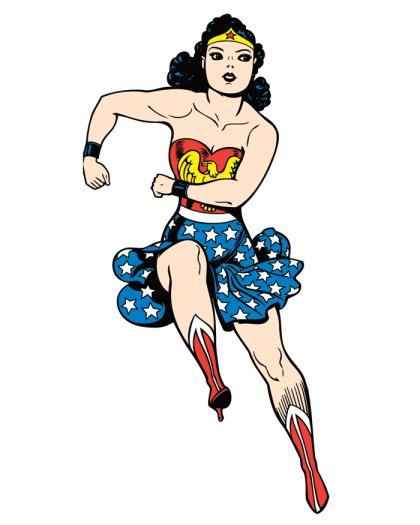
A clear example of a competing narrative is evident in the evolution of the art-form of comics and graphic novels. This form of literature started to shape Western culture with the creation of Superman and Batman in the 1930s. Whatever can be said about this industry and its ascendance as a cultural force, what is incontestable is that for much of its history it was male-dominated. The publishers, especially the ‘Big Two’ – Marvel and Detective Comics (DC), were staffed almost exclusively by men; comics were made by men and marketed to men and boys. The giants of the field in the 1950’s through to the present reflect this: among others, Jack Kirby, Stan Lee, Steve Ditko, Neal Adams, George Perez, Marv Wolfman, Alex Ross, Frank Miller, Todd McFarlane, all deserve recognition for their business and artistic achievements, but it is glaring how little diversity is in this group.
That lack of diversity has showed itself in the content too – in the more than 70-year period of superhero comics, the vast majority of hero protagonists are depicted as ideal-type male figures striking Greek-godlike poses in form-fitting spandex. They triumph usually by using physical force to defeat their foe and save the girl. When female heroes are allowed into the parthenon, they tend to be derivative versions of male characters, e.g. Superman/Supergirl; Batman/Batwoman/Batgirl; Spiderman/Spiderwoman; Hulk/She-Hulk and so on.
Of course, there is one notable exception: Wonder Woman. Wonder Woman was first published in 1941. She was created by American psychologist and feminist, William Moulton Marston (1893 – 1947). He framed her as the daughter of a Greek goddess from an island of amazon warriors. Diana, Princess of the Amazons, travels to the United States to return a rescued American soldier and to further her quest to bring justice to a troubled world. Marston’s imagery is replete with scenes of bondage, and Wonder Woman carries a lasso of truth to compel those caught in it to tell all of their dark secrets. She references pagan imagery and even evokes the ancient lesbian poet Sappho in her famous “Suffering Sappho” battle-cry. However, I would point out that her costume is highly sexualized as her initial design was little more than a one-piece bathing suit, offering little protection and very passive weapons – the lasso, a pair of bracelets to block bullets (when cuffed together they robbed her of her powers, it is bewildering why she would carry such a device with her with such an obvious weakness) and an invisible plane (hardly the transportation of an aggressive warrior).
Nevertheless, Wonder Woman is an independent character, with a distinct persona and personal agency separate from a male character. The prominent feminist magazine Ms. featured her on the cover of its inaugural issue (1972) and Gloria Steinem herself intervened with DC comics to maintain the integrity of Wonder Woman (Knowles, 2007, pp. 160-164). She stands as one of the oldest female characters in American comics and she now stars in a feature film which, at the time of writing, is setting box-office records and getting glowing reviews from top critics. Wonder Woman (2017), starring Gal Gadot, artistically reframes her origin story. It primarily takes place during WWI and sets Wonder Woman against the god of war, Aries, who the film portrays as the divine influence behind the Great War. The film explores several themes related to violence, gender equality and the transitional superhero trope. It will be interesting to see if this artwork alters the frame of future blockbuster films in this genre.

Following Wonder Woman’s lead in comic books, a cultural narrative shift began to build momentum in the 1980s and 90s. Set against the theme of woman as a powerless victim and an object to be saved, we see television and movie fantasy stories depicting women in leadership roles and as action heroes in their own right. For example, Ridley Scott’s Aliens franchise features Sigourney Weaver as a gutsy spaceship commander, leading a valiant defense against a formidable alien foe. A similar storyline is evident in James Cameron’s Terminator 2: Judgement Day where we see Linda Hamilton develop into a military leader preparing the ground to resist the formidable terminator machines bent on destroying humanity. Between 1995 and 2001, Kate Mulgrew (Capt. Janeway) became the first female starship captain in the Star Trek universe through Star Trek:Voyager – a strong but nurturing pursuer of what was right and just, a clear contrast in leadership style when compared to Capt. Kirk in the original Star Trek series. This franchise has continued the trend of supporting women in leadership roles by casting two female leads in Star Trek: Discovery (2017 -) with Sonequa Martin-Green as Michael Burnham and Michelle Yeoh as Captain Georgiou.
Buffy’s Critical Bite
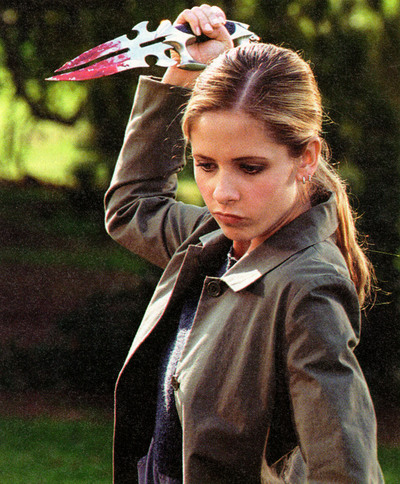
The narrative seemed to be aided further in the 1990s with the introduction of Joss Whedon’s television series Buffy the Vampire Slayer. This Emmy-award winning show aired from 1997- 2003, and starred Sarah Michelle Gellar as Buffy, a high school student gifted with superpowers allowing her to lead a band of her friends to fight vampires, demons and other dark creatures from popular lore.
It was an interesting take on the typical horror genre which usually showed a blonde teenage babysitter or cheerleader being lured to her death by the monster of the film. Buffy was the antithesis of the helpless blonde victim as she had the ability to fight back and indeed hunt the creatures of the night. Moreover, she was not overly sexualized. She wore stylish but conservative clothes, did not compete with the male stereotypes typical of comic book heroes and was a tough, capable warrior who liked to go shopping and bicker with her mother.
Buffy was a powerful example of how the dominant fantasy/adventure trope could be turned in alternate directions through allowing a young woman to star in a series and not employ overt sexuality. Also, the series demonstrated that allowing a strong female character to carry the narrative could lead to critical and financial success. Whedon is an avowed feminist and made a political statement through his art, an act which is more likely to trigger cultural change than most ‘objective’ academic treatments on popular culture.
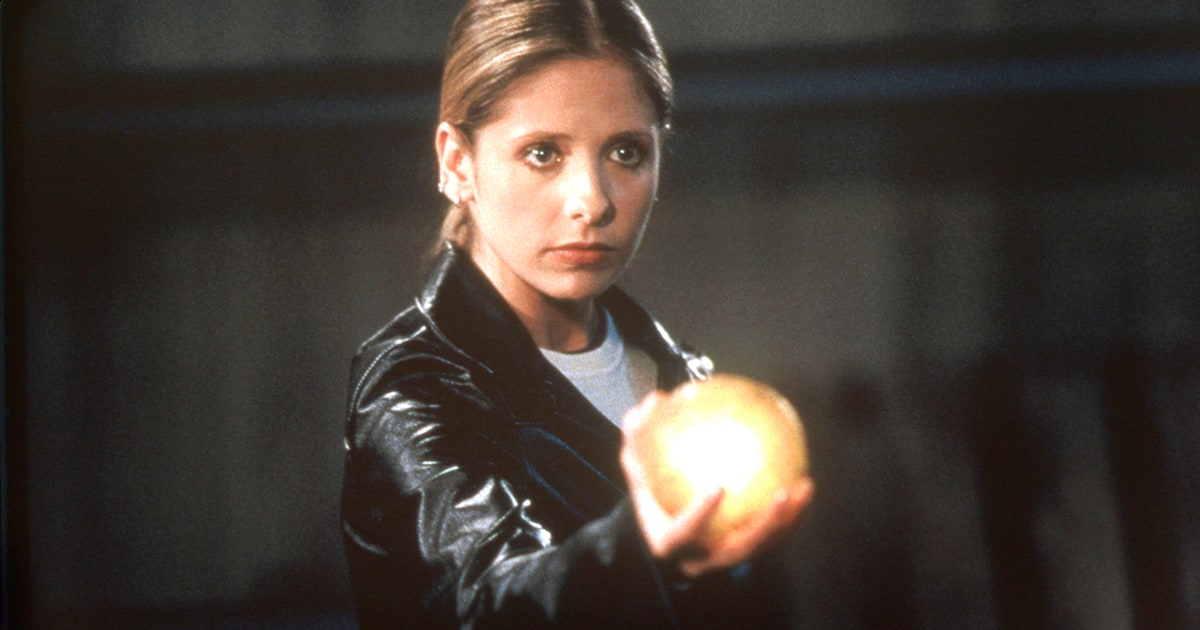
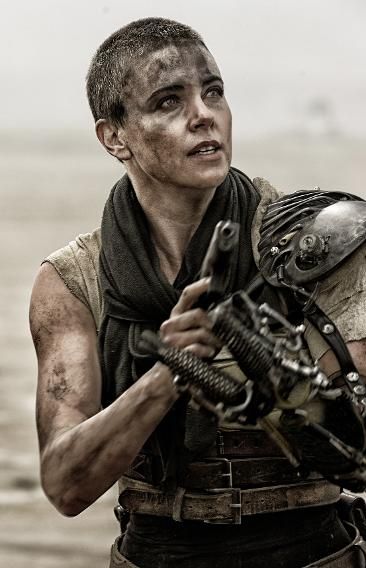
Buffy has led the charge into the 21st century of reframing women’s roles in the fantasy realm reflected in film, television, graphic novels and other mediums. Others have followed, for example, Netflix’s Jessica Jones is a retelling of the Marvel superhero as a gritty, psychologically damaged private detective who battles crime and confronts corporate greed in her ripped jeans and leather jacket. Another example is Ronald D. Moore’s retelling of the 1970s space adventure Battlestar Galatica where he reframes the ultra-masculine Viper pilot, Lt. Starbuck into Kara “Starbuck” Thrace – a talented pilot, every bit as capable as her male peers and equally rough around the edges.
In addition, my case is supported by the creation of the 2015 CBS television series Supergirl. This long neglected DC comic heroine is certainly derivative of her cousin, Superman, but this family-friendly, optimistic take on Kara Zor-El is bold in that it allows a young woman (Melissa Benoist) to lead a cast in a primetime television series.
Other contemporary examples depicting women as the hero in the story include: iZombie (2015–) which features Liv (Rose McIver), MAD MAX: Fury Road (2015) featuring Imperator Furiosa (Charlize Theron), Selene (Kate Beckinsale) in the Underworld series (2003–2017), Rey (Daisy Ridley) in Star Wars the Force Awakens (2015), Star Wars: Rouge One (2016) with Felicity Jones as Jyn Erso, and it has recently been announced (at the time of writing) that Doctor Who (2005–) will cast its first female Doctor, to be played by Jodie Whittaker.
What is interesting about the portrayal of women in fantasy art in the 21st century is a noticeable shift in the visual depictions – Buffy wears typical clothing for a teenager, Starbuck wears the same uniform as her male colleagues, and Supergirl dons a spandex costume but it is not overly sexualized in that the neckline is high and does not reveal any cleavage, her midriff is not exposed like other versions of her costume in comic books and she wears a thigh length skirt. Jessica Jones sports jeans and a t-shirt, more reminiscent of James Dean than a cheesecake pin-up.
Summary
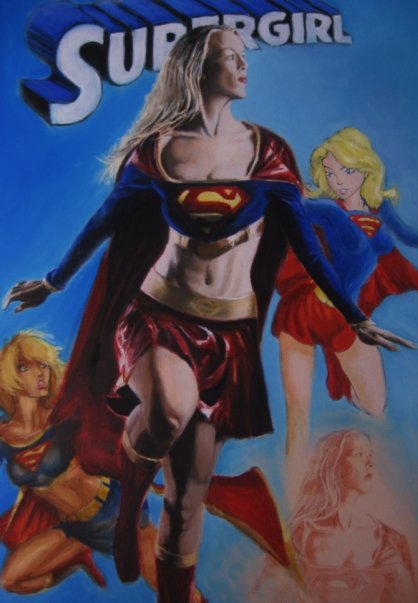
Our culture now has an easier time imagining women in a broader range of roles – including political leadership – in the primary world as a result of work done by Buffy and others to reimage women in fantasy fiction. Women are no longer merely objects of desire for male characters and helpless, powerless victims requiring saving. Although, as I stated earlier, one trope rarely entirely supplants another – as there are still many examples of the Disney princess formula in 21st century fantasy literature (there are signs that Disney itself is beginning to reimagine its long-held trope). Yet, the emergence of a woman as a hero in a less objectified and sexualized manner is undeniable.
Before a public policy goal – such as a recognition or advancement of a groups’ rights – can be achieved, a political collective must be able to imagine the change before it can be implemented. Therefore, as I argue in this paper, an effective way to create political change is to frame it artfully through fantasy fiction; yet, it is a dangerous cauldron in which to brew a new political order as it requires an artistic glue which binds the artist and audience, allowing for the creation of a new world which neither can fully control.
Endnote
- The author would like to thank Dr. Nick Webb for his advice and editorial support for this article. Also, thanks goes to Ms. Katelyn O’Brien for her research assistance and diligent copy-editing of this manuscript.
References
Bekmambetov, T. (2012). The art of Abraham Lincoln: Vampire hunter. Culver City, CA: Aspen MLT, Inc.
Bekmambetov, T., Burton, T. & Lemley, J. (Producers) & Bekmambetov, T. (Director). (2012). Abraham Lincoln: Vampire hunter [Motion picture]. USA: Abraham Productions.
Justin Trudeau joins Canadian superheroes for Marvel Comics cover. (2016, Jun 28). CBC News. Retrieved from http://www.cbc.ca/news/canada/toronto/justin-trudeau-joins-canadian-superheroes-for-marvel-comics-cover-1.3655625
Grahame-Smith, S. (2010). Abraham Lincoln: Vampire hunter. New York, NY: Grand Central Publishing.
Irvine, C. (2009, Jan 08). Barack Obama appears in Spider-Man comic. The Telegraph. Retrieved from http://www.telegraph.co.uk/news/newstopics/howaboutthat/4178474/Barack-Obama-appears-in-Spider-Man-comic.html
Jacobson, N., Kilik, J. (Producers), &, Lawrence, F. (Director). (2015). The hunger games: Mockingjay – part 2 [Motion picture]. USA: Lionsgate Films.
Knowles, C. (2007). Our gods wear spandex. San Francisco, CA: Red Wheel/Weiser.
Kuzui, F. R., Kuzui, K., Whedon, J. & Berman, G. (Producers). (1997-2003). Buffy the vampire slayer [Television series]. USA: Mutant Enemy/20th Century Fox Television.
Latt, D. M. (Producer) & Schenkman, R. (Director). (2012). Abraham Lincoln vs. zombies [Motion picture]. USA: The Asylum.
MacLeod, J. & Webb, N. (2011). Imagery as political action. International Journal of the IMAGE. 1(2).
Mooradian, G., Morgan, M., Godfrey, W. (Producers), & Hardwicke, C. (Director). (2008). Twilight [Motion picture]. USA: Summit Entertainment.
Prettejohn, E., Teippi, P., Upstone, R., & Wageman, P. (2010) J. W. Waterhouse: The Modern Pre-Raphaelite [Exhibition catalogue]. Groningen, Netherlands: Groninger Museum.
Roven, C., Snyder, D., Snyder, Z., Suckle, R. (Producers) & Jenkins, P. (Director). (2017). Wonder woman [Motion picture]. USA: Warner Bros.
Tennyson, A. (1892). The lady of Shalott. The works of Alfred Lord Tennyson: Poet Laureate. New York, NY: Grosset & Dunlap. (Original work published 1833)
Tolkien, J. R. R. (2008). Tolkien on fairy-stories (Expanded ed., with commentary and notes. ed.). V. Flieger & D. A. Anderson (Eds.). London, England: HarperCollins. (Original work published 1939)
Waterhouse, J. W. (1886). The magic circle [Oil paint on canvas]. London, England: Tate Gallery.
What do you think? Leave a comment.











A fine article indeed and one that should, in my opinion, be read by more than just the readership at The Artifice. Excellent work, thorough research and spot-on analysis. Thank you for a fascinating read.
Thank you for your kind comment. It is a topic I care a lot about and I wanted to get it right (as best as I can).
You’re welcome. I’ve sent a link to this article to several literary minded friends, suggesting they read it.
Thanks, again. I’d be happy to get their feedback.
As a writer who has been published numerous times, it is evident that our books can change how readers interact with their fellow humans.
I agree entirely.
Would you like to post the titles of your work? I’d like to check them out.
Politics is shaped by people. And people are most of the time shaped by the fiction they consume.
A+ The Artifice writers and readers get this, that is why I appreciate being published by this community.
I loved that Joss Whedon didn’t feel like he had to make Buffy the nicest sweetest girl next door. Buffy was stubborn, unforgiving and that was part of what made her so great. “Beer Bad,” while not the best of the episodes had a great moment where Buffy did not forgive her college hookup Parker for how he treated her. I loved that.
You bet. The theme of treating each other well in personal relationships was a constant theme in the series. I liked the relationship between Buffy and her watcher, a different and powerful kind of love.
That episode was horrible, but that bit was great. I’m rewatching Season 4 at the moment, and all I can think of is how amazing the season would have been if Professor Marsh was the big bad instead of Adam. Since Buffy and Angel were introducing benevolent demons at the time, it would have rocked if Buffy had to defend demons from some sort of genocide plan of Marsh’s because not all demons were evil. Adam was kind of like a less interesting version of Ultron in many ways, which just isn’t as good.
Interesting idea. I have to go back and watch “Beer Bad” again. Your comparison to Ultron makes sense to me…Joss loves comic book tropes!
I watched Beer Bad again yesterday, I agree it was to the strongest episode but I did like the exchange between Willow and “Patrick” ( I think that is the character’s name) – she really didn’t fall for his weak lines and fake charm.
My Mac autocorrect is killing me – “…wasn’t the strongest episode…” is what I tried to type.
Lovely read. I believe we are going through a period of transition and I personally think that most of us are moving in a positive direction.
Thanks – I hope you’re correct.
Joss Whedon is a genius!
He is a talented artist.
Elegant thesis.
Thanks.
The line between fiction and nonfiction is more blurry than many people like to admit.
I agree – I think will live more in fictive realms than anywhere else.
I recommend “Daughters of Earth” which traces the exploration of space through the female descendants of a family — pretty amazing and relevant read.
Thanks, I will check it out.
Great article Jeff!
Thank you!
This was a really interesting, well-written article. Thanks for sharing! I loved your points about Buffy.
I thought your example of Supergirl was an interesting choice. While you’re definitely correct that the show does a good job at not hyper-sexualizing Kara, I feel that the introduction of Mon-El created a rather problematic anti-feminist dynamic. The writers allowed Kara’s relationship with him to take over the show, and suddenly the story was no longer about Kara and her triumphs and failures as an individual, but rather was monopolized by Kara and her feelings about a man who, until very late game, didn’t even treat her well. Don’t get me wrong – I’m certainly not saying the show shouldn’t delve into Kara’s love life. Women don’t have to be loveless to be feminist. But the fact that their relationship became a lion’s share of Kara’s storyline runs counter to the feminist supposition that Kara’s life shouldn’t revolve around a man. Take Buffy & Angel as a feminist counter-example to Kara & Mon-El. Angel was clearly a supporting character, not a co-lead, and Buffy’s relationship with him wasn’t usually the primary plot of an episode. The Bangel relationship was a small subset of Buffy’s rich and varied life, one in which she dealt with zillions of other obstacles that Angel had literally nothing to do with.
You make a valid argument. I am disappointed that they are taking the show in this direction. I decided to include this example mostly because of the visual depiction of Supergirl and the network’s decision to rest the series on a young, female lead. But I hear your warning. I guess it shows a fictive narrative can be altered and present another frame pretty quickly.
There was some incredible wit in Buffy. The inventiveness in the use of language is worthy of Shakespeare. Spike alone has the most intelligently and artistically written lines of any TV character I can think of.
I’m a fan, too. When Buffy first aired it was a game changer to say the least.
Being a woman, especially in the arts is a blessing because we are not only sensitive but extremely strong, we are not only wise but extremely practical and we are not only kind but extremely generous towards the causes we believe in.
I agree. I think in politics we need a massive re-thinking of how government thinks and does things. The style of women’s leadership in the arts is a model for many fields.
The recent elections in America have given rise to sort of a movement around the globe, particularly in the Western part of the world. We all saw how the new American president objectified and degraded women regardless of their success and achievements in their field of work. Sadly, it isn’t just Donald Trump who carries that attitude around. Thousands of men around the world live with the exact same belief system. Donald Trump is just a reflection of a larger population that still doesn’t value women’s voice, hard work or intelligence.
Yep, society is a battle of narratives. President Trump won round 1 with his election, we will see how it plays out though.
All of them are really well written female characters.
I agree.
This thesis is a very powerful critique of society, power, and privilege, and argues very well how via fantasy fiction, we can make a new political order.
Yes, we need strong art to make social/political change. I’d like to see more and better art education in our culture, especially in secondary schools.
Fiction can say publicly what might otherwise be unsayable.
As a famous poet once said, “These things never happened but are always.”
Really well structured article. Buffy is one of the most influential shows of the modern times.
Thank you, I am a proud defender of Buffy’s role in making things a little better.
Another great article celebrating the achievements of women! I love it. I agree there have been changes but still so far to go! There needs to be more strong role models of women and let us hope the positive trend continues.
Thank you. I, of course, agree with you. Stronger role-models will make better art.
This is a good piece which emphasizes the strength of these works of art; how women are strong in different ways and how we can use the art to progress in politics.
Thank you. As a political science professor I’ve long researched the connection between art and politics, it is a field which needs more attention from a variety of academic disciplines.
“Buffy” is one of the few shows that allows a renegade woman to redeem herself.
You bet, thanks!
Excellent exposition on arts and politics.
Thank you.
The core of this thesis is really whether authors shape their society or reflect it.
I would tend to say, it’s an interaction, but that primarily and at least initially the authors reflects the culture (inevitably including politics, implicitly or explicitly) and comments on it.
Children’s literature is more likely to shape politics in that it influences the adults the children grow into. It is no accident, I think, that the unacceptability of cruelty to animals began to grow when the generation that read Black Beauty and Beautiful Joe came to adulthood, and that veganism and animal rights really gathered steam when the kids who grew up on Charlotte’s Web attained adulthood.
Careful the tales you tell, children will listen. ;}
Thank you.
I support your thesis on children’s literature. It is area I have not done a lot of investigation myself but the secondary literature that I’ve seen supports the conclusion you draw. Art matters as children and adults as it shapes your values – it is much more than idle entertainment.
Very well written article; a very interesting read.
I agree that narratives can bring about social change, but they need to reflect the already existing real world political climate. For example: Ghostbusters 2016 tried to demonstrate female empowerment by dumbing down every male character in the film (which is no victory for the heroines at all), and audiences rejected this notion because the majority of people want to see gender equality; not cutting down another gender to make the other look better.
There is definite power in narratives, that is clear, and if harnessed with the right message, they can affect change in the real world.
The biggest source of empowerment for women in film is Leia Organa from the original Star Wars movies. Though seen as a damsel and remembered as a slave, many of these characters (including Buffy) were inspired by the strength and determination of Princess Leia.
Just one more thing: Not sure if it’s too late to change this, but Yeoh and Martin’s characters in Star Trek: Discovery are named Philippa Georgiou and Michael Burnham
Again, an expertly written article on a very interesting topic.
Thank you for this thoughtful analysis. I regret to admit I haven’t seen Ghostbusters (2016) I will have to take a look soon to see what went wrong (and maybe right).
I accept the premise that female empowerment does not demand a loss of male agency – it is a not a zero-sum game, all genders can excel in the fantasy/art realm and therefore that can translate into the political world, too.
I think you’re right on the character names for Star Trek Discovery, I got them wrong – my bad. I’m not sure much can be done now but I’ll see.
Thank you again for your kind words and catching my error on the Star Trek characters.
If you get in contact with Misagh he should be able to help change it. You should absolutely watch Ghostbusters 2017. It’s an awful film by any standard, but I’d love to read your take on it.
Thanks, I’ll give that a shot.
I’ll get back to you on Ghostbusters.
Thanks, I’ll give that a shot on making that fix.
I’ll get back to you on Ghostbusters.
Nice article. I’d be interested in reading a follow-up that focuses on more recent/modern feminist leads, such as Olivia Pope, Annalise Keating, Emma Swan, Regina Mills, etc.
Thank you. Those are all good examples worthy of their own article.
Great relief from the dominance of hyper-masculine norms and the lack of believable female characters so often present in arts and politics.
Yeah, I am looking forward to what a more inclusive fandom will make with women given a fair share of the stage. I love the genre but you have to call a foul when you see it.
With these fiction lead women, I also try to take into account the presence of other women characters in the work, how they interact with the female lead, if it passes the Bechdel test, etc.
I agree, there is clearly a whole series of essays on this topic – I decided to focus on the leads for now.
Brandon Sanderson has some good female protagonists, although too often they will interact with hardly any other women.
Thanks, I will look at this work more closely, thanks for pointing it out to me.
I agree with everything. Sharing it with friends and family on Facebook.
Thank you! it is refreshing to be able to see this piece being read widely – I really appreciate you sharing it.
BTVS is the best serial in television history, hands down, and that includes all the cable shows that followed it. I still have trouble getting some fans of ‘adult’ serials to watch ‘Buffy’ because they see it as low-brow and a kid’s show.
Buffy was like a bolt of lightning out of a clear blue sky (That’s was C.S. Lewis said about Tolkien, I think it applies to Buffy as well).
There are college courses about Buffy, it had a profound cultural impact bigger than other show.
Yes. I teach a college course on politics in comics and video games, Buffy is a theme in my course.
Art imitates life. And life turns imitates art right back.
Art creates culture, no imitation at all imo.
Fantasy fiction has definitely influenced politics and public opinion. Very convincing piece or writing here.
Thanks, my thesis can be a hard sell to those with very literal minds.
Nice one. Keep going. Thanks for this thoughtful topic
Thank you. I am planning another essay but it will probably address role-playing games.
Anytime you create heroes and villains, good guys and bad guys or pontificate about morality of one sort or another, or any other behavioral dichotomy you have influenced those who become exposed to it. It would be better if this was done openly, with some kind of disclosure of interests or ideology (which is a kind of interest) involved but that’s not likely to happen. The audience often seek out content creators whose material confirms their prejudices.
I agree, I guess it is the extent of that influence…I can tell a friend a make-believe story and they may be influenced by it; but that is no where near what Buffy or Wonder Woman have done. Also, I think art is more subtle and works through ambiguity, if you are too explicit the audience may not accept it.
I think fantasy fiction can enable us to see the world through the eyes of people unlike ourselves and view them more empathetically.
Great point, fantasy art can be source of inspiration and may allow us to feel other’s pain/joy in a way like no other,
This is a great article. And what a great show Buffy was! In particular “The Body” was one of the best things I have ever seen on television. Has the death of a loved one ever been so accurately and devastatingly depicted before?
I agree, its power comes from how well it was made.
Every time I rewatch the series and I see that “The Body” is the episode title, I feel bereft, before the episode even starts. Every time.
The purpose of art is to bare witness and to create meaningfulness from that experience. Art gives voice and form.
I agree, it may be possible it creates new meaning, too.
Thank you for the top read!
Thanks!
Looking forward to read your next article.
Thanks, I’m working on something now.
Fantasy fiction can get things done. I want a t-shirt with: “In fantasy fiction, we trust.”
I’d buy one of those.
Gratitude to the great writers who have created these powerful female characters. Making up stories is essentially an inherently political act. Like voting is. And like choosing not to vote is, too.
Well put, I agree.
Fiction is a lie through which the truth may be perceived.
Interesting…then maybe it isn’t a lie?
Fiction affects politics more than we would like to admit.
Yes, it is hard to tell where fiction ends and reality begins in some ways.
BtVS showed us what equality should look like, how men and women should treat each other with respect, and pointed us towards who our enemies were.
Good point, I agree.
FANTASTIC piece. Women are equally capable, talented and resourceful as their male counterparts. It is true in the arts as it is in any other industry.
I agree entirely. Thank you for your kind comment.
Who knows how our social and political lives might change if we were all persuaded to view at least one art that has a woman in power.
A good point – it does seem to be shifting that way though.
I loved Buffy and Starbuck in the reimagined Battlestar Galactica, and saw much of it as really innovative.
Me, too. Thanks for your comment.
This is a highly relevant topic to be reflecting on, and as you identify we are still situated in a position where fictionally women are being represented through new lenses, however, for every Buffy there is unfortunately another Belle that progresses at the same time. It is of course necessary to celebrate and recognise such changes to ensure that a normalisation of women in roles of power do occur, without of course the overt sexualisation. However, I do remain disappointed at the slow progress forward. For instance, though a massive fan of Whedon and his great portrayal of Black Widow, the Marvel franchise has remained strongly patriarchal. There are continous spin offs for the male characters, but still no strong female lead, yes I know about ‘Ms Marvel’ but I’m a little of the “I’ll believe it when I see it” mindset when it comes to Hollywood Blockbusters. Buffy was such an outstanding move forward for feminist ideals, but since then there has not been as much in relation to similar programming coming out of the US. ‘Jessica Jones’ is a very gritty urban fantasy that does show some positive progression, but she is largely dominated by the figure of Kilgrave – understandable from a story plot position, but still it does undermine the power and strength she represents. I would like to see more Buffys, with less psychological damage.
Fantastic article and a very timely topic.
Thanks you for your supportive comment and analysis.
I accept your point that progress has been slow, but it is moving a bit in the right direction. On reflection, I should have spent some time on the Ms. Marvel example as it supports the argument (also, it has professional art and an engaging story).
I have a soft spot for Jessica Jones, her dry wit and facial expressions crack me up – I thought she carried the show in the Defenders series. That said, I see your point on Kilgrave, although she did overcome him – kind of a metaphor for women in general and comic books?
Buffy didn’t start this trend but she gave it a big push forward and I thank her for warding off a few vampires who had previously dominated cultural content.
Thank you, again, for your thoughtful comments.
Hi Jeff,
Good point, I tend to forget that before Buffy there was a slow movement forward, for example Ellen Ripley did pave much of the way and there are other examples. I also think that Jessica’s overcoming of Kilgrave is a positive metaphor for women to overcome patriarchal oppression, but at times I worry that the message is that although these situations can be overcome it can only be done at great sacrifice and risk, I’m not sure this is necessarily the best message. If you’ve ever read the Anita Blake Vampire Hunter series this has a similar framework, where although Anita is an incredibly powerful female hero the sacrifices she makes are in line with a tragic hero and demonstrate only that a female can overcome her personal circumstances in a patriarchal society, but cannot change the framework of her larger situation.
I think this is, obviously, a really interesting discussion and look forward to seeing what else you put out. Thanks for taking the time to respond.
Thanks,
Sarai
Thanks, again. I share your concerns, but why sugar-coat it? An oppressive relationship is hard to get out of, isn’t it?
I will check out Anita Blake, I’ve heard of it but not looked at it closely. I will check it out.
A few years from now, I am hopeful that things will have changed for the best and we will see more women achieve success and recognition in politics, and arts for that matter.
I am hopeful, too – indeed, “…rebellions are built on hope” – J. Erso (I’m sorry, I couldn’t resist).
It’s great that lately there’s been more female protagonist!
You bet!
Hopefully one day, women will make it to the history books, and it won’t be as big a deal as it is today.
Bravo to that.
Women can bring about a whole new change on both social and professional levels.
Women,especially feminist thought, is urgently needed in our political discourse.
“Literature” has always influenced politics and often in a covert and almost subliminal way.
I agree, the influence of art is subtle but powerful.
The only issue have with this is when politics, and society in general, dictates art. I will take Doctor Who as an example. Surely, I am more than happy to have a female Doctor, but I can’t help wondering if this cast was an artistic choice, who will bring something to the story and the timeless character that is the Doctor, or just something to satisfy a fanbase highly composed of women and a public who becomes more and more aware of ghe importance of feminism. Women representation need to be as natural as men’s, and not forced.
Society (and politics) not only dictates art, it creates art. And what commercial artist isn’t concerned about their fanbase? So it seems you are arguing to take politics out of art, which is impossible and ultimately an undesirable act because it suggests a condition where artists are not accountable for what they make. So starting a sentence with “…more than happy” to a have a female DW and then suggest that this could just be pandering to feminism doesn’t wash with me. It is a political act to imply that Doctor Who is a male character and you can’t change it, it is ok to take such a position but at least own it.
One of the best articles I have read.
Thank-you, Janice.
Too much stress? Too many business meetings? A too busy family life? You feel somehow exhausted? It is time for a massage release!
Spam?
I enjoyed reading this article as I considered feminism and sexual equality in our society. Today, I admit we live in the world where gender roles and preferences are equalised more than what it was in the past. Feminism is to obtain the same equal right for women as men possess. However, we should admit the distinction between men and women. It does not mean one side is subordinate to another. I totally agree with Disney or other animation companies depict a woman as a hero without objectifying them. However, I disagree with an idea of breaking down the whole gender distinction and homogenise men and women.
Thanks for your comment. Feminism is not merely about legal equality, I think that is a narrow reading of a specific brand of liberal feminism. Feminism offers a new way of imagining power relationships in culture and politics. I don’t find it threatening and indeed Third Wave feminism may offer something that we desperately need in Western society.
Some good stuff here, but why is this such a white list?
That is a valid point. I hope there will be more creators in this field from more diverse ethnicities. Please feel free to add to this list of works I’ve mentioned.
I do appreciate that the new Captain Marvel is a Muslim woman. Also, I think Marvel and Image comics are attempting to promote more diversity in their work. It is welcome trend and I expect it will make the art better.
This article addressed a valid point. Women are idolized for qualities that we may not see as our best. I am waiting for a story about a woman who learns to embrace her inner beauty on her own without the help of her prince charming. Women do not need the help of anyone let alone a man to know her worth. Now tell me that would not be a good story.
I agree. Political agency often depends on cultural imagery and my argument is we need to continue the current trend of how artists frame women.
This is great and you are right on the money. I think it should also be discussed how there are only like two Disney stories where the female protagonist isn’t focussed on finding love.
Thank-you. I like Mulan, I think there is a bit of female agency beyond the normal Disney non- sense.
Interesting, the imagination seen through comics, movies, TV shows that help women advance in the real world. If, in fact, fantasy helped or made acceptable women in the real world to enter politics, for example, can it help elsewhere (inequality, environmental awareness)?
The short answer is yes. 🙂
Im so astonished by the way you connected all the current controversy nowadays.
Thanks for sharing, you’re such an inspiration.🧞♂️
Thank-you for your kind words, I’m glad you enjoy my work.
Well, I haven’t watched any Buffy movies, and wouldn’t watch any either. However, that didn’t stop me from enjoying this well written article.
Thanks. I don’t tell people what they should watch; but I appreciate the comment on the argument.
I think it’s no coincidence that the my favorite shows growing up were Sabrina the Teenage Witch, Buffy the Vampire Slayer, and Charmed.
Honestly, I can’t think of any other 90’s shows with women leads. That’s sad.
I know Disney is trying to redefine its old power structures. Sorry, though. The damage is done. I have spent endless hours and days and years in my personal life and career trying to undo the ideology that Disney planted, grew and harvested.
I wish better for women in this next generation, and even better thereafter.
I hope you’re right. I see more shows now with women leads. I like the new Birds of Prey trailer. Also, I think it is more than just leads as actors, perhaps more women as creators at all levels of these productions will change things for the better.
Thanks.
This is certainly a trend that has continued over the years. My thoughts immediately jumped to the remake of She-Ra and the Princesses of Power, which had compelling female leads in the hero and villain roles. I think the point about how stories shape our idea of what’s possible is an exceptionally important one, and a reason to seek out especially unusual fiction. After all, stories read often influence stories written, which makes me question how much society will change when there are so many common threads in stories old and new. How much do stories have to change on the whole before society changes as well, both in female representation and other matters? I wonder if it’s a measurable metric.
As I’ve argued in this essay (and elsewhere) policy doesn’t change until our stories do. I see some improvement on how women and POC are being framed in popular culture, but it has come with a small, but vocal, backlash. Gatekeepers of old stories do not give up power easily, but change does happen IMO.
It is not easy to measure because most of the change happens initially in the mysterious world of the cognitive unconscious, but it does get reflected in the real world in ways that are observable.
Thank you for reading my article and your thoughtful comment.